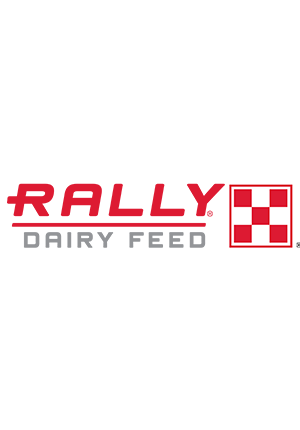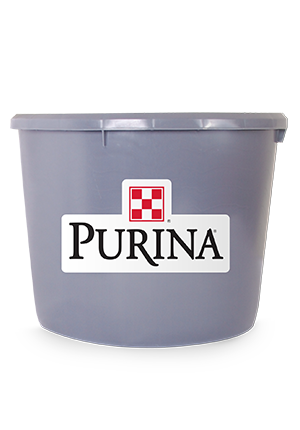
Preparing Dairy Heifers for First Lactation Success
Heifer : Heifer Management
Heifer : Heifer Nutrition

As a dairy farmer, heifers are one of your most valuable assets. They are the future of the milking herd and ultimately determine the longevity of your entire herd and business. Therefore, properly caring for and preparing your dairy heifers for a successful transition into lactation is critical and should start at birth.
Immediately after birth, calves should be moved to a clean, dry nursery and the navel should be dipped in an iodine solution. Within the first hour after birth, feeding at least 1 gallon of high-quality colostrum is recommended to provide antibodies to help protect the calf from disease early in life. Additionally, practicing good hygiene and reducing other stressors can help get your calf off to a strong start and reduce future performance losses.
Optimal nutrition in the neonatal stage is critical for growing healthy dairy calves and higher performing milking cows. Regardless of your milk feeding choice, providing your heifer calves a higher plane of nutrition at a recommended 2 lbs. per day on a dry matter basis in tandem with a high-quality pelleted starter feed for at least 56 days improves overall pre-weaning efficiency or average daily gain (ADG) and sets them up for optimal performance and efficiency post-weaning. Ideally, heifers should gain 1.8-2 lbs. per day throughout the pre-weaning phase.
If the calf’s birth is mismanaged from either care or nutrition, we can expose them to bacteria and viruses that can lead to illnesses that can negatively impact their growth and performance, specifically ADG, which is an important performance indicator for heifer calves. These negative impacts are difficult to reverse later in the calf’s life. Research by Cornell University showed that each 0.1 lb. increase in pre-weaning ADG resulted in 155 lbs. more first lactation milk yield.1 This ultimately showcases the importance of calf care and nutrition in the calf’s early stages to help keep its full performance potential that will pay off in the first and subsequent lactations.
During this stage of development, it is important to focus on ADG and volumetric growth to reach optimal breeding size. Body condition and frame size are the key factors to consider when deciding when to breed your heifers, followed by age.
Historically, it was believed that breeding heifers earlier in life would equal a quicker return on investment (ROI). However, with this method producers saw smaller animals, which led to poorer lactations and decreased ROI. These animals didn’t have ample time to develop optimal body condition and capacity suitable for milk production. Heifers that are undersized are usually less productive because they need to partition more energy toward growth rather than milk production. Breeding heifers when they are properly developed allows them to focus most of their energy into milk production in the first 6 months of lactation. In turn, their productive life starts sooner, and your ROI is realized quicker.
When it’s time to breed your heifers, you should work with your on-farm team and breeder to help determine whether a heifer is big enough to breed. A few tools can be used to help decide whether to breed or wait. You can review any ADG records you may have kept. This can be an indicator of the growth trajectory of the animal and when a heifer or group of heifers may reach optimal breeding size. Additionally, visual evaluation of the animal's body condition and frame size can be used. It can be especially helpful to keep a record of your observations to use as a comparison for the group week after week and even for comparing groups year after year to dial in projected breeding times and sizes.
For smaller heifers, it is best to provide a dense, highly digestible diet. A dense diet simply means that every pound will be more caloric, digestible and more readily available for the animal, much like a post-freshening diet. Because they are smaller, they do not have the body capacity to eat as much dry matter as maybe the larger heifers can, so the denser diet allows them to eat a little less but has a similar caloric intake as a heifer that is eating more of a less dense diet. Every bite is packed with nutrients to help with growth and milk production simultaneously. When working with your nutritionist to formulate a ration for these first lactation heifers, it should balance the following:
To learn more, talk with your Purina representative or visit purinamills.com today.
©2023 Purina Animal Nutrition LLC. All rights reserved.
References
1 Soberon, F., and Van Amburgh, M. 2013. Lactation biology symposium: The effect of nutrient intake from milk or milk replacer of pre-weaned dairy calves on lactation milk yield as adults: A meta-analysis of current data. J. Anim. Sci. 91:706–712.
Your success begins on day one
Research has shown that early calf care and nutrition are the foundation for and can significantly impact the future growth, potential milk production, reproduction and overall health of your replacement dairy heifers.Immediately after birth, calves should be moved to a clean, dry nursery and the navel should be dipped in an iodine solution. Within the first hour after birth, feeding at least 1 gallon of high-quality colostrum is recommended to provide antibodies to help protect the calf from disease early in life. Additionally, practicing good hygiene and reducing other stressors can help get your calf off to a strong start and reduce future performance losses.
Optimal nutrition in the neonatal stage is critical for growing healthy dairy calves and higher performing milking cows. Regardless of your milk feeding choice, providing your heifer calves a higher plane of nutrition at a recommended 2 lbs. per day on a dry matter basis in tandem with a high-quality pelleted starter feed for at least 56 days improves overall pre-weaning efficiency or average daily gain (ADG) and sets them up for optimal performance and efficiency post-weaning. Ideally, heifers should gain 1.8-2 lbs. per day throughout the pre-weaning phase.
If the calf’s birth is mismanaged from either care or nutrition, we can expose them to bacteria and viruses that can lead to illnesses that can negatively impact their growth and performance, specifically ADG, which is an important performance indicator for heifer calves. These negative impacts are difficult to reverse later in the calf’s life. Research by Cornell University showed that each 0.1 lb. increase in pre-weaning ADG resulted in 155 lbs. more first lactation milk yield.1 This ultimately showcases the importance of calf care and nutrition in the calf’s early stages to help keep its full performance potential that will pay off in the first and subsequent lactations.
Determining the optimal breeding size
Properly managed and fed pre-weaning heifers make your job easier as a producer and are a step closer to first lactation success. But it shouldn’t stop there. Proper nutrition is just as crucial in the post-weaning stage to achieve desired ADG as the heifer grows and the body prepares for breeding.During this stage of development, it is important to focus on ADG and volumetric growth to reach optimal breeding size. Body condition and frame size are the key factors to consider when deciding when to breed your heifers, followed by age.
Historically, it was believed that breeding heifers earlier in life would equal a quicker return on investment (ROI). However, with this method producers saw smaller animals, which led to poorer lactations and decreased ROI. These animals didn’t have ample time to develop optimal body condition and capacity suitable for milk production. Heifers that are undersized are usually less productive because they need to partition more energy toward growth rather than milk production. Breeding heifers when they are properly developed allows them to focus most of their energy into milk production in the first 6 months of lactation. In turn, their productive life starts sooner, and your ROI is realized quicker.
When it’s time to breed your heifers, you should work with your on-farm team and breeder to help determine whether a heifer is big enough to breed. A few tools can be used to help decide whether to breed or wait. You can review any ADG records you may have kept. This can be an indicator of the growth trajectory of the animal and when a heifer or group of heifers may reach optimal breeding size. Additionally, visual evaluation of the animal's body condition and frame size can be used. It can be especially helpful to keep a record of your observations to use as a comparison for the group week after week and even for comparing groups year after year to dial in projected breeding times and sizes.
Dialing in your lactation diet
Once your heifers are bred, proper nutrition and management are once again key for the success of your first lactation heifers. Whether you are dealing with smaller or optimal-size heifers, to make the transition into lactation a smooth one, it is important to provide a balanced, highly digestible diet with adequate metabolizable energy and protein because you are not only asking the heifer to continue to grow or maintain body condition, but also to produce as much milk as possible. When a ration is made with high-quality, highly digestible ingredients, the heifer can conserve energy for milk production, which ultimately leads to faster income generation.For smaller heifers, it is best to provide a dense, highly digestible diet. A dense diet simply means that every pound will be more caloric, digestible and more readily available for the animal, much like a post-freshening diet. Because they are smaller, they do not have the body capacity to eat as much dry matter as maybe the larger heifers can, so the denser diet allows them to eat a little less but has a similar caloric intake as a heifer that is eating more of a less dense diet. Every bite is packed with nutrients to help with growth and milk production simultaneously. When working with your nutritionist to formulate a ration for these first lactation heifers, it should balance the following:
- Energy – Increasing energy is the easiest way to increase the caloric volume, thus making a denser ration.
- Metabolizable protein – Focusing on metabolizable protein in your overall crude protein is important because it will help make the diet more digestible so the heifer can partition her energy to milk production rather than digestion.
- Fatty acids – Fats are a vital component of the diet because they help the heifer manage body condition, body energy status and increase nutrient digestibility.
- Fiber – When making a dense diet, fiber can often be sacrificed. However, this can have adverse effects on digestion and can decrease productivity. So, it is important to balance the ration with the correct level and type of fiber that will help maintain a healthy rumen for optimal fermentation and performance.
- Sugars and starches – Sugars and starches add to the density of the diet and are a great ingredient to help break down and metabolize fiber. It is important to balance sugar and starch with fiber to help reduce excess acid production that could lead to rumen challenges such as acidosis.
- Macro and micronutrients – The kind and amount of macro and micronutrients you add to the ration can vary based on heifer need and ingredient availability. For example, heifers in the Mid-Atlantic states tend to be selenium deficient, so it is wise to add selenium to the diet for those animals.
To learn more, talk with your Purina representative or visit purinamills.com today.
©2023 Purina Animal Nutrition LLC. All rights reserved.
References
1 Soberon, F., and Van Amburgh, M. 2013. Lactation biology symposium: The effect of nutrient intake from milk or milk replacer of pre-weaned dairy calves on lactation milk yield as adults: A meta-analysis of current data. J. Anim. Sci. 91:706–712.

.png?width=300&height=430&ext=.png)


